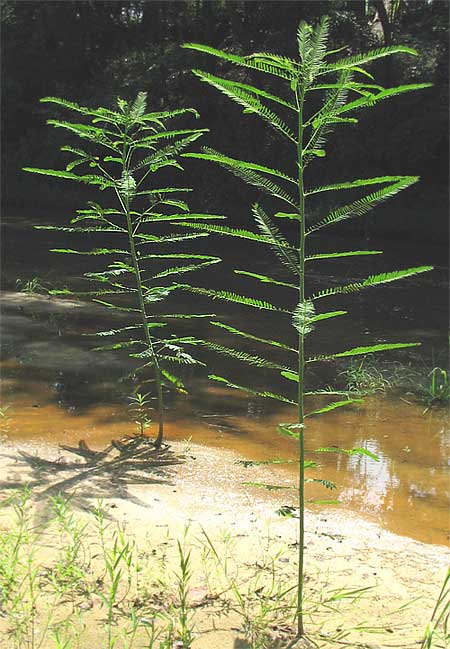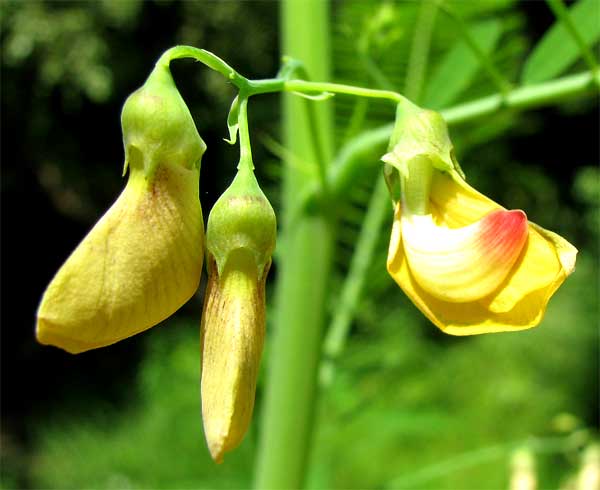Excerpts from Jim Conrad's
Naturalist Newsletter
from the August 11, 2008 Newsletter, issued from the forest near Natchez, Mississippi; elevation ~400ft (120m), ~N31.47°, ~W91.29°:
SESBANIA ON SANDY CREEK
When I returned to Mississippi in early June, emerging from wet sand all along nearby Sandy Creek's shoreline were abundant, flowerless, ferny-looking, ankle-high herbs whose thousands of robust, feathery leaves created a striking presence. Over the summer I've watched them grow, each week a few inches higher, more and more eye-catching, until now they're seven to ten feet tall, so different from other plants along the creek and with such a dignified presence that they seem otherworldly, like proud Roman centurions at attention among the throngs of simple plebeians. Two seven-ft-tall ones are shown below:

The plant is SESBANIA HERBACEA, known by such names as Hemp Sesbania, Coffee-weed, Indigo-weed, Peaweed and a host of others. It's still too early in the season for most Sesbania herbaceas to be flowering but a couple of plants among the dozens on a sandbar where I rested this week bore flowers, and you can see them below:

For that picture I removed the near side of the "banner" of the flower on the right, and its nearest "wing" so you can see the neat way its "keel" curves upward inside the blossom, terminating with a splash of red. Those words banner, wing and keel are special terms used to describe the unique flower structure of Bean-Family' papilionaceous flowers, for Sesbanias are Bean Family members. The "banner" is the top petal, which in Sesbania's case has enlarged and folded downward so that it almost encloses the whole blossom. "Wings" are the two side-petals, which sometimes flair out like insect wings, and the "keel" is formed by the five-petaled blossom's two lower petals, which join together to form something like the keel of a boat.
Despite the plant's aristocratic appearance it's a native species, and despite its size (to 13 feet, 4m tall) and woody-looking trunk, it's an herb, dying back each winter. If you pull up a plant you'll find warty-looking, nitrogen-fixing mycorrhizal nodules on its fibrous roots, so this plant definitely contributes importantly to Sandy Creek's riverside ecology.
Still, in Arkansas it's considered a noxious weed because it competes with rice in flooded rice fields. The species is native to the US Deep South, but sometimes shows up as far north as New York and Pennsylvania.